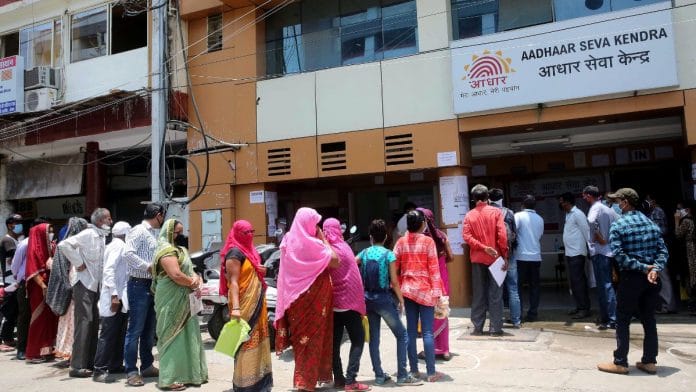At the recently concluded Confederation of Indian Industry Partnership Summit, Sunil Bharti Mittal, chairman, Bharti Enterprises suggested that India’s much acclaimed Jan Dhan-Aadhaar-Mobile combination of digital public infrastructure “is the right approach to apply into Africa, so they can get to very high-quality digital connectivity across the entire continent”.
Mittal is right, but we should spread our wings beyond the less-developed nations. Ever since the Unique Identification Authority of India (UIDAI) was formed in 2009 and the first Aadhaar card issued in 2010, the country has made great strides in building its digital public infrastructure backbone. Today, India Stack, a group of open APIs (Application Programme Interface) and digital public goods has not only been adopted by billions of individuals and businesses within the country but is also gradually making its impact in different parts of the world.
For example, the Philippines and Morocco have become the first countries to adopt Aadhar’s open-source technology architecture to build similar systems for their citizens. The Aadhaar-like platform, MOSIP, in alliance with the ID4D initiative of the World Bank, managed out of IIIT-Bangalore, has partnerships with the governments of Madagascar, Ethiopia, Sri Lanka and Burkina Faso. NPCI (National Payments Corporation of India) International Payments Ltd has tie-ups with financial institutions in the US, China, Bhutan, Japan and Sri Lanka. It is taking UPI and RuPay to other parts of the world. Some countries like Australia are studying the feasibility of setting up an account aggregator like India has. Diksha, built through a public-private partnership between the Ministry of Education, EkStep — a private initiative for public good co-founded by Nandan Nilekani, Rohini Nilekani and Shankar Maruwada— and Ashish Dhawan-promoted Central Square Foundation has the keen interest of many African nations.
Also Read: UPI to Aadhaar, Modi govt showcases ‘India Stack’ of digital goodies for global adoption
Significant interest in Indian innovation
While much of the above are alliances with less-developed nations, it is time now to take India’s public digital infrastructure model to the Western world and other developed countries. How can this be done?
Sunil Mittal-led Airtel Africa has a significant presence in 14 African countries providing telecom and mobile money services. He has also been a vocal advocate of investment opportunities for Indian companies in Africa and elsewhere. Similarly, over more than a decade or so many Indian business groups like Mahindra and Mahindra, Tatas, Godrej and Aditya Birla Group globalised themselves with a good presence outside India including in Western countries. Promoters of these groups have significant goodwill in their respective investee countries and with their national governments. Apex industry associations like CII (Confederation of Indian Industry) and FICCI (Federation of Indian Chambers of Commerce & Industry) too have made inroads with their counterparts overseas. Indian CEOs and industry associations should be champions overseas of India’s strengths in the digital public infrastructure space and help lay its imprint there.
An important element of India’s successful Covid-19 vaccination programme was the digitally-generated vaccination certificate developed by India’s e-Gov Foundation. Even in countries like the US, digital certificates were not the norm. Covid-19 may have subsided, but the threat of a pandemic still looms. India can pioneer the use of digital certificates for vaccinations of communicable diseases across the world.
Also Read: Cybercriminals ‘cloning’ Aadhaar biometric data to commit fraud: MHA nodal agency to states
The path ahead for Digital India
India’s $ 245 billion software and technology industry led by giants like Tata Consultancy Services, Wipro and Infosys Technologies has grown from small beginnings in the 1990s to one that has a global presence. Today, India has a similar opportunity with its public digital infrastructure platform.
India’s public digital platform is an integrated one that combines various elements like Aadhaar, United Payment Interface (UPI), biometrics and e-KYC, while in many parts of the world, they are not only private but also standalone. For example, Mastercard, VISA, Amazon Pay and Paypal are all payment products of the US, while We Chat and Ali Pay rule in China. Our integrated model is unique and will be very useful even in developed countries and can be shared with them as a reverse innovation. It can also be useful in multiple sectors like healthcare and insurance.
Finally, on the backbone of India’s vast digital infrastructure, an entire value-creation ecosystem has emerged. One of them is that of start-ups and unicorns. India ranks third, after US and China, for the most number of unicorns. Many of them are in the fintech space which depends on seamless digital transactions. India could export this model to other countries.
At a time when India is holding the G-20 presidency, Digital India could be a useful instrument of economic diplomacy and global awareness building.
George Skaria is a former editor at the Indian School of Business. Views are personal.
(Edited by Theres Sudeep)






